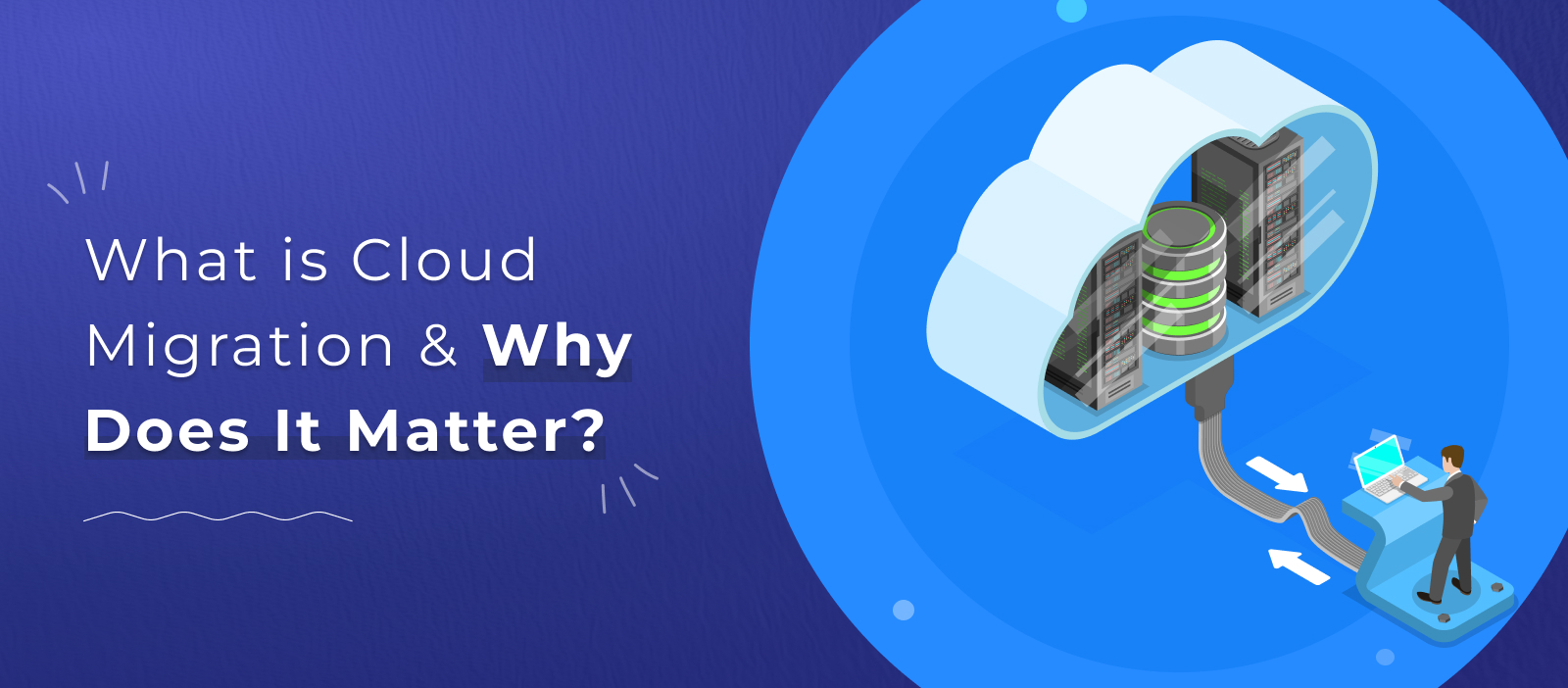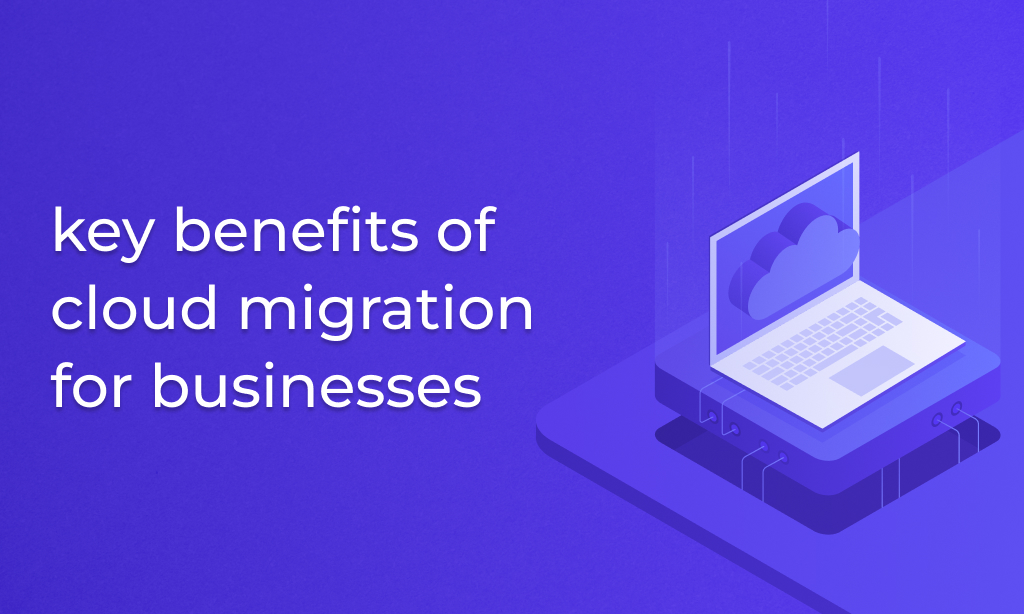Cloud Migration: A Complete Guide for Businesses in 2025
July 4, 2025

What is Cloud Migration & Why Does It Matter?
To keep pace with competition, companies now have to modernize their IT infrastructure. Cloud migration provides a means for scalable and efficient data storage by moving data, applications, and workflows to the cloud.
An organization gains agility, reduced costs, and faster innovation through hybrid cloud, public cloud, or multi-cloud arrangements. A cloud-first approach accelerates deployment and digital growth.
If built on trusted cloud security, these enterprise cloud solutions enable an organization to undergo IT modernization. Rapid transitions to the cloud are the ultimate way to get ahead in a world where being digital comes first.
Types of Cloud Migration:
Rehosting: Rehosting means moving your data into the cloud without making changes to the data.
Replatforming: Replatforming means moving your data into the cloud, but only small changes are made.
Refactoring: Refactoring means redesigning your app fully using the full help of the cloud.
Repurchasing: Repurchasing means buying the cloud and stopping the use of old storage.
Retiring: Retiring means stopping using those systems that are outdated and old.
Retaining: Retaining means keeping old systems in your old storage.
Key Benefits of Cloud Migration for Businesses

Easy to Scale:
Cloud allows us to grow our IT assets, which are storage and computing power, as needed.
We can take a simple example: our business is growing rapidly, and now we need more space or storage to store that data, allowing us to use the cloud adoption to increase our storage. Also, if we want to decrease the storage, we can do it in the cloud.
We don’t need to buy new servers again and again if our storage is full; we can increase our cloud storage instead of buying new ones.
Also, it’s perfect for startups and newly growing businesses.
Better Performance:
Better performance, high-speed networks, and powerful computers so that users can run their apps and websites faster.
For example, if our e-commerce business is growing faster, then the cloud is best to use because, at a time when many users are using your website, it can load faster.
A better customer experience is delivered.
Save Money:
As we need to maintain our general storage, we need to hire different employees for it, so in the cloud adoption, you don’t need to do it; you can only pay for what you are using instead of paying for all.
Instead of buying a car and paying high bills for maintenance, you can use a taxi and save money.
Reduces extra unused rental pay
Helps small businesses and large Enterprise Cloud Solutions control costs better.
Amazon Web Services, Microsoft Azure, and Google Cloud use the cloud to be
Strong Security:
The focus of cloud service companies is on security. They protect your data in various ways by using such things as data encryption, firewalls, backup systems, and even artificial intelligence.
It’s like putting your important files in a digital safe with high-tech features and several locks, rather than leaving them available on your desktop.
IT Modernization reduces the risk of data breaches and theft of users’ data.
Support For Innovation:
By adopting cloud security services, companies can quickly leverage advanced technology such as Artificial Intelligence (AI) and Machine Learning (ML). These services enhance the analysis of customer data and help firms understand customer buying patterns by automating certain repetitive tasks.
This encourages innovation while helping companies be more efficient and empowering faster decision-making that provides a competitive advantage.
Challenges in Cloud Migration & How to Overcome Them
Data Security:
Data security is keeping digital data free from unauthorized access, corruption, and theft. It entails behaviors like setting strong passwords, encryption, and data protection policies like GDPR and HIPAA.
The General Data Protection Regulation (GDPR) is legislation in European nations that is intended to protect users’ personal information. It provides users with authority over their information and demands that companies acquire explicit consent before gathering it.
The Health Insurance Portability and Accountability Act (HIPAA), however, is a U.S. law governing how individuals’ health information is shared. HIPAA primarily pertains to providers, such as healthcare providers, hospitals, and insurance companies, in that it ensures their health data is held privately and securely.
Downtime:
Downtime is defined as the amount of time you have lost because your website or application is down for the period it is down. For example, if your online offering is down for three hours, that is considered three hours of downtime.
This can stop potential users from accessing your services or from making a purchase, which detrimentally affects business performance and revenue.
Besides losing revenue, consistent or extended downtime can harm a brand’s reputation. Server failure, software bugs, and other technical difficulties are the tools of downtime.
Old Systems:
Old systems are systems that are out of date (both software and/or hardware) and are used by some organizations to manage critical operations. They are typically incapable of taking advantage of modern features or it is not feasible.
The vendor/manufacturer of these old systems has often stopped providing support, or the product has been withdrawn from the market, making it challenging for organizations to implement new system features.
It is expensive to maintain old systems, and they may compromise security through their vulnerabilities and poor performance.
Step-by-Step Guide to a Successful Cloud Migration
Step 1: Assess Your Current IT Infrastructure:
This step is about understanding what technology your business currently uses, such as:
- Computers and servers
- Software and applications
- Databases and storage
- Network systems (routers, firewalls)
- Security tools
In short, you’re taking inventory of all your IT Modernization systems.
Step 2: Define Your Cloud Migration Goals:
Define why you want to migrate. You have to have a purpose before you begin the transition.
Let’s say you’re relocating to a new office.
Ask yourself:
- Are we migrating to improve scalability?
- Do we need better data security or compliance?
- Are we aiming to reduce infrastructure costs?
- Do we want faster performance or better remote access?
Without specific cloud migration goals:
- You might overspend or face unexpected costs
- You could migrate the wrong applications or systems.
- Your team may face confusion or delays due to unclear directions.
With well-defined goals, you can:
- Align your migration with business needs
- Choose the right cloud services and architecture
- Track progress and measure success
- Get support from stakeholders and leadership
Step 3: Choose The Right Cloud Model:
A cloud model is the kind of configuration you select when hosting your applications and data in the cloud. It’s how your cloud operates — whether shared, private, or hybrid.
Public Cloud:
You lease space on a cloud provider’s servers (AWS, Microsoft Azure, or Google Cloud). You’re sharing hardware with other businesses, such as residing in an apartment complex.
It’s essentially utilized by:
- Start ups
- Small businesses
- Businesses that need to go quickly and be cost-effective
Private Cloud:
You alone utilize this cloud. Either host it yourself or allow a vendor to host it. It’s similar to having a house — only you occupy the house.
It is primarily used by:
- Banks
- Government
- Healthcare
- Any institution with sensitive information
Hybrid Cloud:
A combination of private and public clouds. You keep some private and outsource others to the public cloud, such as having a house but renting storage units when necessary.
It is utilized by:
- Large companies
- Firms with both secure and general systems
Multi-Cloud:
It refers to the utilization of several cloud security providers (e.g., AWS + Azure) simultaneously for various purposes. This prevents you from putting all your eggs in one basket.
Example:
- Use AWS for storage
- Utilise Google Cloud for AI features
- Utilise Azure for Microsoft services
Step 4: Select the Proper Cloud Provider:
Leading providers:
- Amazon Web Services (AWS)
- Microsoft Azure
- Google Cloud Platform (GCP)
How to select:
- See what uptime guarantees they offer
- See what security features they have
- See how they price
- See what customer support they offer
Step 5: Develop a Cloud Migration Strategy:
There are several strategies to migrate your applications and systems to the cloud.
Typical Phases:
- Begin with non-mission-critical systems (e.g., file storage)
- Then databases
- Lastly, migrate core business applications
The Future of Cloud Computing: Trends to Watch:
AI and Machine Learning in the Cloud:
Cloud now gives us extra features that analyze data and grow our business.
Edge Computing:
Instead, we send all data to the cloud. We can process that data on our phones for faster and better use.
Serverless Computing:
You don’t need to handle the data. All you can do is send your code to the cloud, and it will process it automatically.
Conclusion:
In 2025, the cloud will continue to be the most secure and scalable way to save data. A well-built cloud-first approach allows businesses to turn challenges into opportunities.
Making cloud adoption an integral part of IT modernization bestows more agility and innovation.
While enterprise cloud solutions will provide the bandwidth for business agility, cloud security will protect it; hence, both will be imperative for sustaining long-term success in the digital era.
Keep reading about
LEAVE A COMMENT
We really appreciate your interest in our ideas. Feel free to share anything that comes to your mind.
Our 16 years of achievements includes:
-
10M+
lines of codes
-
2400+
projects completed
-
900+
satisfied clients
-
16+
countries served




